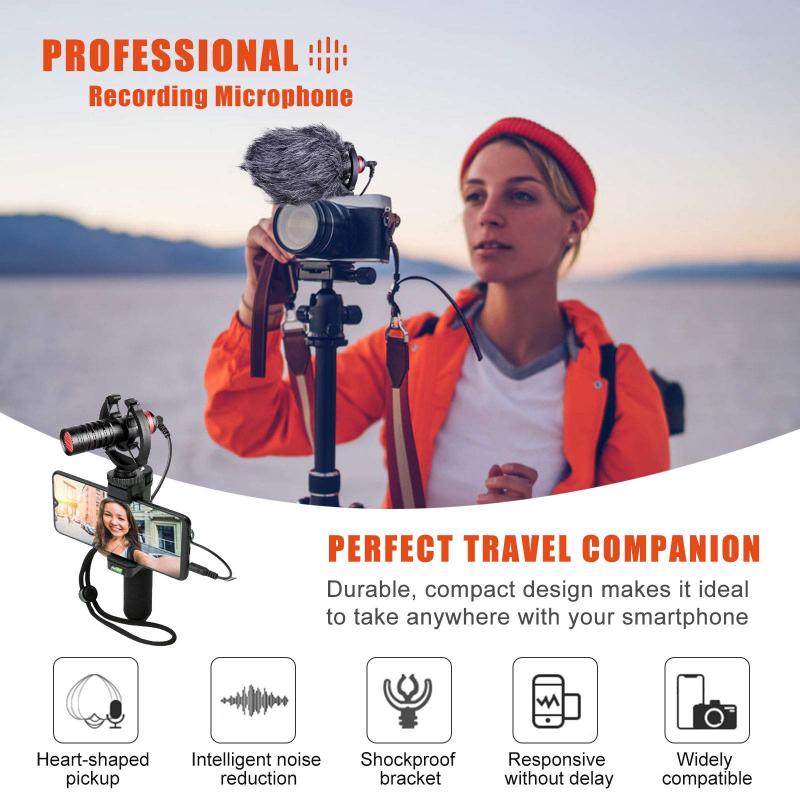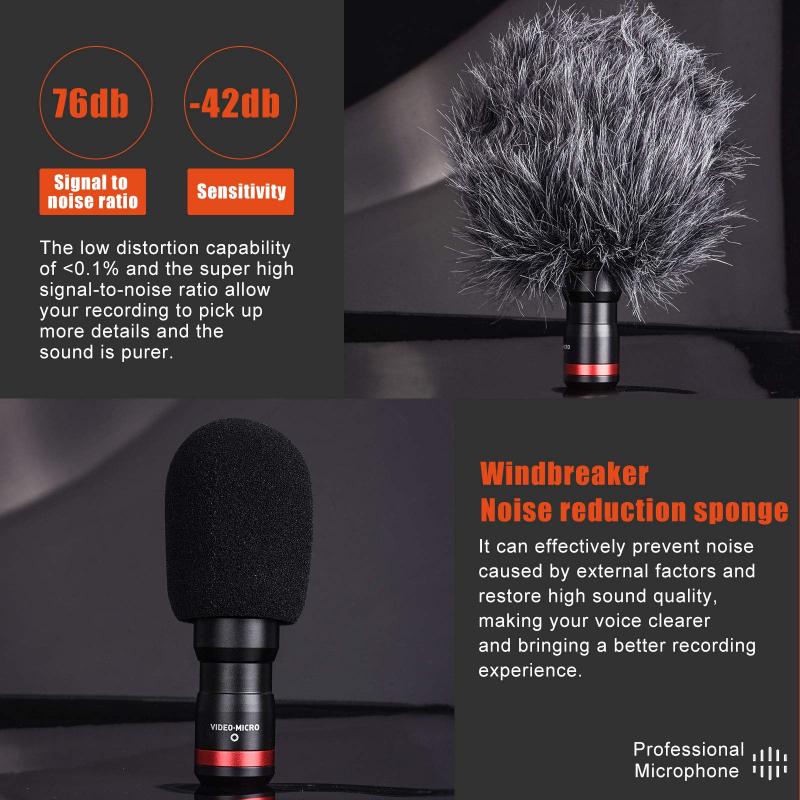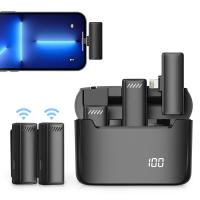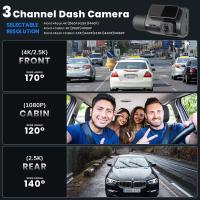Can We Put Camera With Microphone?
Can We Put a Camera with a Microphone?

In today's world of video production, content creation, and surveillance, the question of integrating a camera with a microphone has become increasingly relevant. Whether you're a professional videographer, a hobbyist, or simply someone who wants to make the most of your gadgets, understanding the technical possibilities and practical applications of combining a camera with a microphone is essential. This integration is not only possible but has become a standard in various industries, from filmmaking to security systems and even virtual conferencing.
In this article, we will explore the reasons behind the integration of cameras and microphones, how this technology works, and the real-world implications of combining these two devices. We’ll also dive into the practical benefits and challenges of pairing a camera with a microphone.
Why Combine a Camera with a Microphone?

Cameras and microphones serve distinct but complementary purposes. A camera is primarily designed to capture visual data, while a microphone records audio. When combined, they allow for an immersive experience where both the visuals and the sound are synchronized. This integration is necessary for multiple applications, and understanding why can provide better clarity on the topic.
1. Video Production
In the realm of video production, having synchronized sound and visuals is critical. For movies, TV shows, online streaming, or YouTube content creation, a camera with an integrated microphone allows for more streamlined shooting. Rather than relying on separate devices—camera for video and a microphone for sound—integrating both components into a single unit can simplify production setups, reduce equipment clutter, and improve portability.
Most modern digital cameras, even smartphones, now come equipped with built-in microphones that capture adequate sound for everyday use. However, for professional audio quality, high-end microphones are often used in tandem with cameras, such as shotgun mics, lapel mics, or condenser mics. The advantage here is that the microphone can be attached to or used alongside the camera, ensuring high-quality sound that aligns perfectly with the video footage.
2. Surveillance and Security Systems
In surveillance systems, the combination of a camera and microphone plays a crucial role in providing a full picture of an event. While cameras record video footage, microphones capture the surrounding sounds, which can provide valuable context. For instance, in a security scenario, knowing what was said or the sounds of footsteps can help investigators understand the situation better than video alone. Many modern security cameras come with integrated microphones, making it easier for property owners and businesses to monitor both visual and auditory aspects of their premises.
However, this combination also raises concerns regarding privacy laws, as recording audio can often be subject to more stringent regulations than video alone. In many regions, consent may be required to record conversations, and failure to comply with these laws can lead to legal complications.
3. Virtual Conferencing and Live Streaming
In the context of remote work and online communication, video conferencing has become ubiquitous. Whether it’s Zoom, Microsoft Teams, or any other platform, combining a camera with a microphone is essential for clear, real-time communication. The quality of both the video and the audio impacts the overall experience. Without good audio, even the best video can fall flat, leading to communication breakdowns or frustration among participants.
Most webcams and laptops come with built-in microphones, but these tend to pick up more ambient noise and lack clarity compared to specialized external microphones. Many professionals, therefore, opt to use a dedicated microphone in addition to their camera. This setup ensures that the audio is crisp and clear, even if the surrounding environment is noisy.
4. Vlogging and Content Creation
Content creators, particularly those in the YouTube or TikTok space, also benefit from cameras with built-in microphones or paired camera-microphone systems. When you're creating content on the go, having both a camera and microphone in one device reduces the need for extra gear, making it easier to shoot and record content more efficiently. However, for those seeking the highest audio quality, a separate microphone might still be necessary.
5. Broadcasting and News Reporting
Broadcast journalists rely heavily on both video and audio quality. In environments like newsrooms or live broadcasts, integrating a camera with a microphone ensures that journalists can capture all aspects of an event with precision. Many professional cameras, used in television studios or live reporting, feature high-quality microphones designed to capture ambient noise, interviews, and live sound with great fidelity.
Technical Challenges of Combining a Camera with a Microphone

While the integration of cameras and microphones is extremely beneficial in many contexts, there are also technical challenges that can arise.
1. Audio Sync Issues
One of the common challenges in video production when using both a camera and microphone is maintaining perfect synchronization between the video and audio tracks. This is especially true when the microphone is not physically attached to the camera but is used independently. Syncing the audio with the video in post-production can sometimes be tricky, particularly if multiple microphones or cameras are used. Advanced video editing software like Adobe Premiere Pro, Final Cut Pro, and DaVinci Resolve can help address these issues, but the process can still be time-consuming.
2. Microphone Quality
Not all integrated microphones offer high-quality sound, and in many cases, they can pick up unwanted noise from the camera’s mechanical components or the environment. For example, the microphone might capture the sound of the camera’s zoom motor, autofocus noise, or handling noises when the camera is being adjusted. To counter this, professional video creators often opt for external microphones that are specifically designed to minimize background noise and capture clearer sound.
3. Power and Battery Life
Combining a camera and a microphone often means using more battery power. For devices like smartphones or action cameras, this is a concern, as extended use can quickly drain the battery. External microphones can sometimes offer better sound quality, but they can also require additional power sources, such as separate batteries or a connection to the camera’s power system. This makes managing power sources crucial when recording for long periods of time.
4. Privacy Concerns
As mentioned earlier, the combination of a camera and microphone can pose privacy concerns, particularly in security or surveillance contexts. Many jurisdictions have laws that require consent before recording audio, and violating these laws can lead to significant legal repercussions. Additionally, there are ethical considerations when recording people’s conversations without their knowledge, especially in public spaces or private properties.
Benefits of Using a Camera and Microphone Together

Despite these challenges, there are undeniable benefits to combining a camera with a microphone.
1. Improved Production Quality
When a camera and microphone work together, you get both clear visuals and high-quality audio. This ensures that the final product—whether it’s a video, a live stream, or a security recording—provides a comprehensive representation of the situation. For content creators, this results in a more engaging and professional-quality product, while in the context of security, it ensures that all aspects of a situation are captured.
2. Simplicity and Portability
For content creators, combining a camera with a microphone offers greater simplicity. Instead of juggling multiple devices, the integration allows you to focus on capturing the best content with fewer distractions. Portability is another advantage, particularly for vloggers and on-the-go creators. Smaller, integrated systems can easily be carried around without weighing you down with bulky equipment.
3. Cost-Effective Solutions
For those on a budget, cameras with integrated microphones can be a cost-effective solution. Many consumer-grade cameras, including smartphones, already come with good enough microphones for basic use. By investing in one device that handles both tasks, you avoid the additional costs and complications of purchasing separate audio equipment.
In summary, combining a camera with a microphone is not only possible but often necessary for achieving high-quality video and audio in a variety of applications. Whether you're producing professional video content, monitoring a security system, or engaging in live-streaming and conferencing, understanding how cameras and microphones work together is essential for optimizing your setup.
While there are challenges—such as syncing issues, microphone quality, and privacy concerns—the benefits of this integration cannot be overlooked. By carefully considering your specific needs and potential limitations, you can create a more streamlined, efficient, and effective workflow, whether you're in a studio, on a live broadcast, or simply recording content for social media.








































There are no comments for this blog.